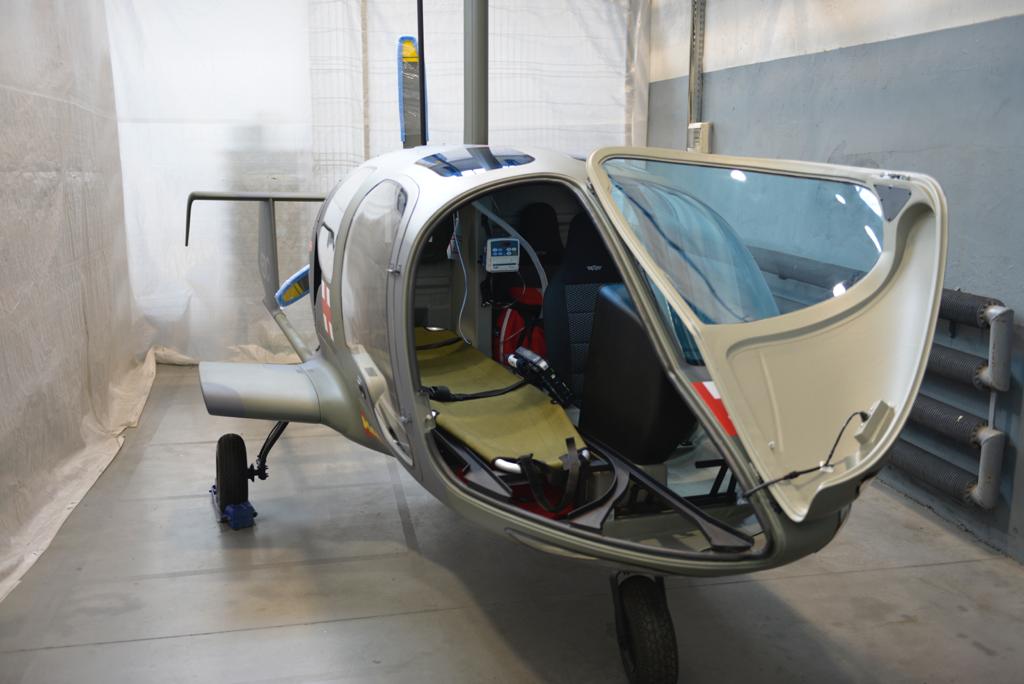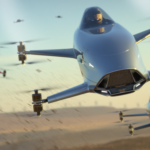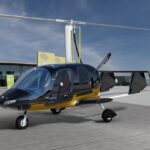Captain Rangajara ‘Raja’ Iyengar, Ph.D., founder of Aerodyne, talks to FINN editor Hazel King about how the company is hoping to revolutionise the advance air mobility market for the masses
 Tell me about Aerodyne and your journey with the company
Tell me about Aerodyne and your journey with the company
I came from a finance and business management background, and I helped businesses develop and strategies for themselves. In 2009 I had a bit of an illness which left me reassessing my life and by the time I came through that in 2011 I wanted to do something that I was passionate about. I got my pilots license at the age of 18 and between the ages of 21 and 22 I had flown in every state in the US. I had my own little aircraft and I really enjoyed flying. So, I thought, I’m passionate about aviation and I want to get into that industry.
I started looking at other opportunities around the flying car idea, eventually settling on a company in Poland creating a gyrocopter. Chris, the owner, invited me to buy into the company and from 2014-2018, we improved the materials, developed the airframe, we looked at a variety of versions for different uses – from personal transportation to military and air ambulance – and we figured, if we can imagine it, we should be able to do it.
The Aerodyne air ambulance was one of the products I’m really proud about. Other air ambulances use complex turbine engines and require experienced pilots to fly them. They’re also very expensive to run – about £2,800 per hour. Chris and I sat down and redesigned the air ambulance with a piston engine using a gyroplane. We found we could manufacture them for less than a million pounds and we could reduce the costs to less than $250 an hour, including fuel, maintenance, overhaul, operations, pilot, the lot.
How will you evolve the company?
Everything we do is about changing the perspective that people have and trying to make flying a more commonplace things, rather than being an elite and exclusive thing. With the Avectra project, we hope to build 10,000 aircraft a year globally, so that more and more people get to understand that they can fly. In a similar vein to Tesla, you start off with a small foundational base, but then you build quite large, quite quickly. We know that with time and effort, we can reduce the cost of production to below £100,000 for the personal aircraft.
We are also exploring new aircraft, including a helicopter and a fully autonomous eVTOL, where people who don’t have a pilot’s licence can go flying, if the regulations change. The idea is within five years, you will be able to use a vertical take-off and landing (VTOL) vehicle in the similar way to ordering an Uber ride – pick your start and end point, the system will program the air traffic control requirements, the aircraft in your garage will be plugged in to the system and off you go.

What are the challenges you’re coming up against?
Funding is always an issue. People don’t completely understand the market and there have been quite a few companies who have jumped in. What happens is good investors will hedge their bets, but they are very few and far between. A lot of people will look at something and think that’s where they want to go, and so when existing products develop, finding the people to invest in them is very difficult.
Another challenge is staffing. It is going to be critical because to go from 100 aircraft a month to 1,000 to 10,000 is quite a step and we are methodical and exacting in our standards. We also don’t believe in using automation to build our aircraft. We are very labour intensive in the way we do things. The fabrications department cannot be done by a robot, it must be handmade, which is obviously a very labour intensive way of doing things but we feel it is the right way, even long term. This is also because an automated robotics system it complicated to change if we change the design – with a human-intensive production line, we can change things within 24 hours.
Do you think the demand is there for a mass advanced air mobility market?
There is a perception problem because a lot of people don’t understand that technology has moved far enough that I can have a low cost VTOL vehicle today. Yes, you need a pilot’s licence, but it is also cheaper than getting a full aircraft pilot’s licence. There are rules and regulations in the UK that I don’t need to go to an airport to fly. If an aircraft can land in the vicinity of my house, I can take off from there. All I have to do is inform air traffic control in advance that I’m taking off from a location and make sure I’m in constant contact with them as I take off. I think in the next 6-8 months we will change people’s perceptions as they realise they can buy an aircraft for under half a million pounds, have their own pilot’s licence and fly for about £50 an hour.
How will the flight routes work – will we see airborne traffic jams?
There are two levels of flying – visual reference rules and instrument flight rules. Even though you’ll be flying using instruments, these smaller VTOL will not really fly under instrument rules. Also, we have a lot of airspace between 3,000ft and 20,000ft. Generally the rule is flying west you fly evens and flying east you fly odd numbers – so if someone flying east at 3,000ft, someone flying west can be at 4,000ft, and so on. So even in a stack, there are 18 aircraft allowed to fly, so there are ways to do it.
With VTOL, it will also be feasible for these aircraft to be used for very local routes such as to the supermarket. I would be very interested to see a major supermarket’s car park filled with these types of aircraft, the same way we currently have a parent and child, disabled and electric vehicle charging section, in the future we could see a VTOL section! As more people see it being used and they see it as a safe way of travelling, more and more people will do it.
And finally, as FINN celebrates 75 years of the iconic Farnborough Airshow, what is your wildest dream for the future of aviation in the next 75 years?
I don’t think we’ll be on Mars. We have a fantastic planet, and we should be saving that. I would hope that every required piece of travel is done by flight, and I have an imagination that we may live in vertical houses because of space requirements. We’ll be able to take off from where we are and land where we want to. We will have a silent, sustainable aircraft and I would hope that in 75 years everyone will be able to afford that and use that as their main means of transport. I would love to say I would be here in 75 years’ time – I know we’re living longer but that is a level of length I don’t think I could survive!
This interview was conducted as part of the 75th anniversary celebrations for Farnborough International Airshow. FINN is owned by Farnborough International, the organisers of the airshow.
Subscribe to the FINN weekly newsletter
You may also be interested in
UK industry sets out priorities to make Advanced Air Mobility a reality

